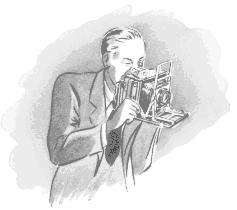| View previous topic :: View next topic |
| Author |
Message |
umitulgen
Joined: 11 May 2004
Posts: 2
|
 Posted: Tue May 11, 2004 10:02 am Post subject: Posted: Tue May 11, 2004 10:02 am Post subject: |
 |
|
Hi all,
I recently made a 6x13cm panoramic camera with the parts of old agfa isolette camera. I am planning on using ysarex 127mm but struggling to find info on flange distance?? I will using this camera purely for landscapes and I need focus to be from closes it can get to infinity. can anyone please direct me to the right info on the net how to complete this procedure or be kind to explain it to me how its done. I know theoratically how it done ie placing a ground glass at the film plane and moving the lens in a distance til the mid range comes into a focus and thats how you set the infinity?? am I right or missing something fundemantel??
thanks very much
umit |
|
| Back to top |
|
 |
Dan Fromm
Joined: 14 May 2001
Posts: 2159
Location: New Jersey
|
 Posted: Tue May 11, 2004 11:34 am Post subject: Posted: Tue May 11, 2004 11:34 am Post subject: |
 |
|
| Quote: |
On 2004-05-11 03:02, umitulgen wrote:
Hi all,
I recently made a 6x13cm panoramic camera with the parts of old agfa isolette camera. I am planning on using ysarex 127mm but struggling to find info on flange distance?? I will using this camera purely for landscapes and I need focus to be from closes it can get to infinity. can anyone please direct me to the right info on the net how to complete this procedure or be kind to explain it to me how its done. I know theoratically how it done ie placing a ground glass at the film plane and moving the lens in a distance til the mid range comes into a focus and thats how you set the infinity?? am I right or missing something fundemantel??
thanks very much
umit
|
Umit, you might not be able to get there from here. The longest lenses mounted on Isolettes, if I remember correctly, were 105 mm on 6x9 cameras and they were front cell focusing. If you're going to use the Isolette's front standard and its supports, you're in trouble because they can't possibly position a 127 mm lens far enough from the film.
A rough rule of thumb is that the lens' rear nodal point is in the diaphragm's plane. This isn't exactly true, but will give you a reasonable basis for initial layout.
To find flange-to-film distance at infinity, focus on a subject that's very far away. The mid range is not at infinity or even very far away.
Cheers,
Dan |
|
| Back to top |
|
 |
umitulgen
Joined: 11 May 2004
Posts: 2
|
 Posted: Tue May 11, 2004 2:05 pm Post subject: Posted: Tue May 11, 2004 2:05 pm Post subject: |
 |
|
hi Dan,
sorry that my message was not too clear. I only used the film chambers of the isolette and made a wooden housing for the entire thing. now my camera is 27cm long and 6cm deep. it looks like linhof 612pc!! at least i like to think so. so that means i can use any lens i want on this camera. and I have made deep lens boards to make the distance for the 90mm angulon and 65mm super angulon. but my budget does not allow these lenses just yet.
umit |
|
| Back to top |
|
 |
t.r.sanford
Joined: 10 Nov 2003
Posts: 812
Location: East Coast (Long Island)
|
 Posted: Tue May 11, 2004 7:12 pm Post subject: Posted: Tue May 11, 2004 7:12 pm Post subject: |
 |
|
"Infinity" varies with the focal length of the lens, to some extent -- infinity begins a lot closer to a short-focus lens than to a longer-focus one. Depending on where you are, you may or may not have a very distant church steeple or microwave relay antenna mast or water-tower or industrial smokestack in view.
When you don't, you can use an astronomical object. Elsewhere on this site, someone has referred to the "bug-burning" method -- I'd not heard it called that before, but it's an accurate description. Basically, you open the shutter and image the sun on a white card held behind the lens. Adjust the lens-to-card distance until the card begins to smoke...
You also can use the moon, focusing visually, either on a card or on a groundglass (or a piece of artist's matte acetate).
If you need considerable accuracy, e.g. to make a focusing mount, you could rig up a simple instrument by taking a rigid metal ruler, slotting a couple of wooden blocks to slide along its edge, then attaching vertical boards to their back ends (so the bottom of each board rides along the ruler's scale, at right angles to it).
Make a hole in the forward one to hold the lens, and perhaps cut an aperture in the back one to carry a focusing screen -- or simply use a piece of stiff white card for the board, and examine the projected image. You ought to be able to measure flange-to-film distance within a millimeter or so, with no difficulty.
Such a device could be as crude or as polished as your inclination and time allowed. |
|
| Back to top |
|
 |
|
|
You cannot post new topics in this forum
You cannot reply to topics in this forum
You cannot edit your posts in this forum
You cannot delete your posts in this forum
You cannot vote in polls in this forum
|
Powered by phpBB © 2001, 2005 phpBB Group
|


